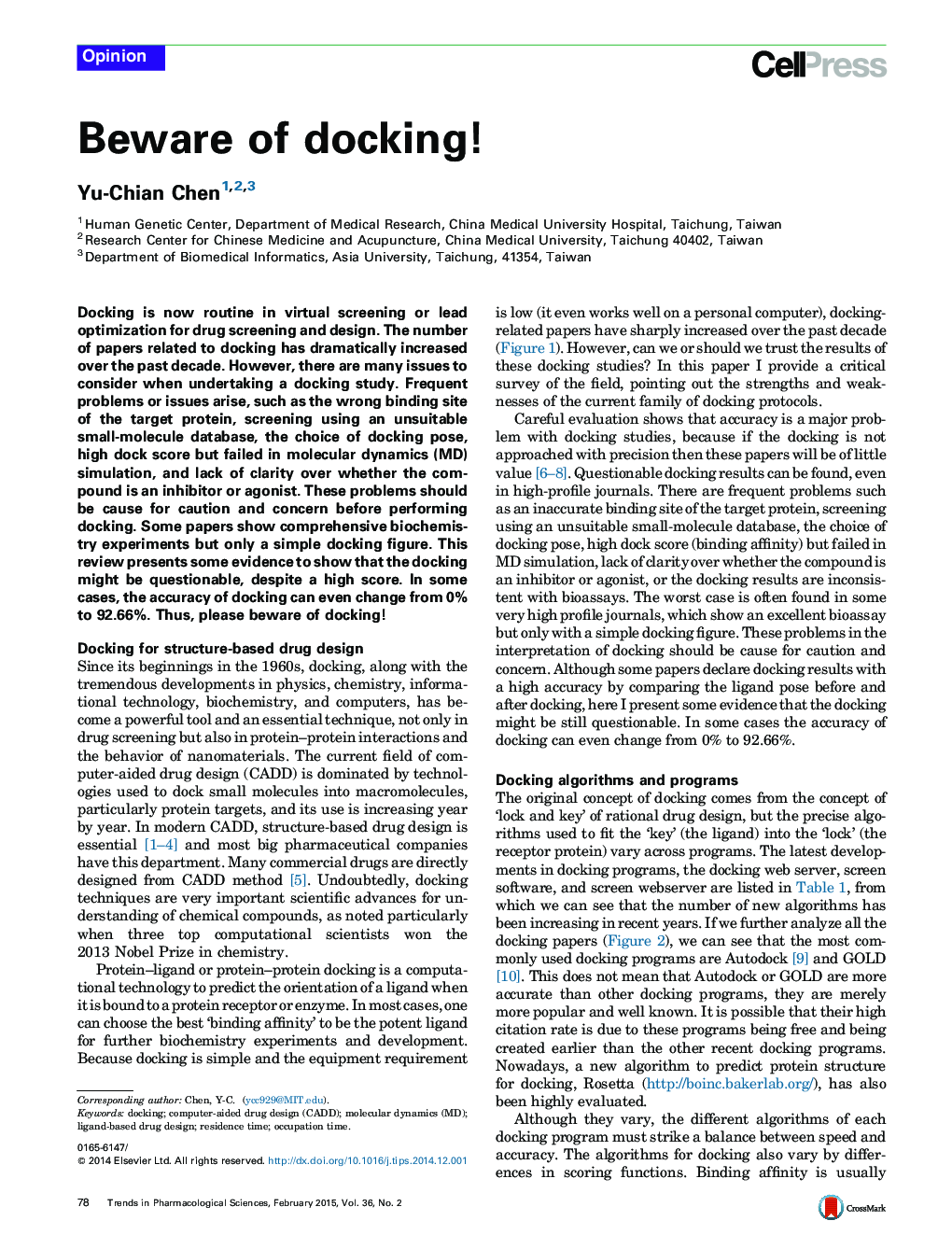| Article ID | Journal | Published Year | Pages | File Type |
|---|---|---|---|---|
| 2572687 | Trends in Pharmacological Sciences | 2015 | 18 Pages |
•Docking is a fast and low-cost technology for large-scale drug screening.•Molecular dynamics simulations sometimes reveal docking poses that are actually unstable.•Drug design should consider both binding affinity and residence time.•A molecular dynamics simulation is currently not long enough to accurately model residence time.
Docking is now routine in virtual screening or lead optimization for drug screening and design. The number of papers related to docking has dramatically increased over the past decade. However, there are many issues to consider when undertaking a docking study. Frequent problems or issues arise, such as the wrong binding site of the target protein, screening using an unsuitable small-molecule database, the choice of docking pose, high dock score but failed in molecular dynamics (MD) simulation, and lack of clarity over whether the compound is an inhibitor or agonist. These problems should be cause for caution and concern before performing docking. Some papers show comprehensive biochemistry experiments but only a simple docking figure. This review presents some evidence to show that the docking might be questionable, despite a high score. In some cases, the accuracy of docking can even change from 0% to 92.66%. Thus, please beware of docking!
